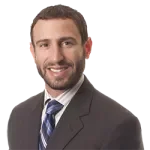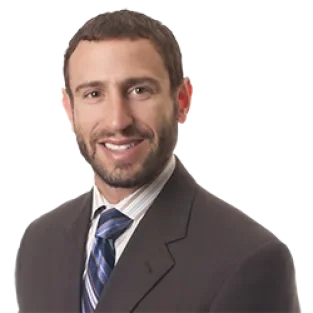ASAP
San Francisco’s Newest (and Permanent) Public Health Emergency Leave Ordinance
Based on provisional results from the June 7, 2022, election, it appears San Francisco, California voters have approved Proposition G, which will create a permanent1 public health emergency leave (PHEL) ordinance that will become operative on October 1, 2022. PHEL will be in addition to paid leave employers offer or provide employees (e.g., San Francisco paid sick leave) at the beginning of a “public health emergency,” i.e., a local or statewide health emergency related to any contagious, infectious, or communicable disease declared by San Francisco or California health officials (e.g., COVID-19), or an air quality emergency when the Bay Area Air Quality Management District issues a Spare the Air Alert.2 Eventually, San Francisco’s Office of Labor Standards Enforcement (SF OLSE) will develop guidelines or regulations to implement the ordinance. Until then, below we summarize what the ordinance requires.
Covered Employers, Employees & Family Members: The ordinance will apply to employers with 100 or more employees worldwide except certain non-profits, and to employees who work in San Francisco. For employers with unionized workforces, the ordinance will not apply to employees covered by a bona fide collective bargaining agreement that expressly waives the ordinance’s requirements in clear and unambiguous terms.
Under the ordinance, employees can use leave for themselves or, under certain circumstances, to care for or assist a “family member,” which has the same meaning as under San Francisco’s Paid Sick Leave Ordinance, i.e., child, grandchild, grandparent, parent, sibling, spouse or domestic partner, or a designated person if the employee has no spouse or domestic partner.
Covered Uses: Employees can use PHEL when they are unable to work due to the following reasons:
- Recommendations or requirements of an individual or general federal, state, or local health order – including an order issued by the local jurisdiction where an employee resides – related to the public health emergency, or the employee is caring for a family member subject to such an order;
- A healthcare provider advises an employee to isolate or quarantine, or the employee is caring for a family member who has been so advised;
- The employee is experiencing symptoms of and seeking a medical diagnosis, or has received a positive medical diagnosis, for a possible infectious, contagious, or communicable disease associated with the public health emergency, or the employee is caring for a family member who is experiencing symptoms;
- The employee is caring for a family member whose school or place of care has been closed, or whose care provider is unavailable, due to the public health emergency; and
- An air quality emergency, if the employee primarily works outdoors and is a member of a vulnerable population, i.e., diagnosed with heart or lung disease; has respiratory problems including but not limited to asthma, emphysema, and chronic obstructive pulmonary disease; is pregnant; or is age 60 or older.
Employers of certain healthcare provider or emergency responder employees, however, can elect to limit PHEL for those employees to the following scenarios:
- A healthcare provider advises an employee to isolate or quarantine;
- The employee is experiencing symptoms of, and is seeking a medical diagnosis or has received a positive medical diagnosis for, a possible infectious, contagious, or communicable disease associated with the public health emergency and does not meet federal, state, or local guidance to return to work; and
- An air quality emergency, if the employee is a member of a vulnerable population, primarily works outdoors, and a healthcare provider advises the employee not to work during an air quality emergency.
Whether falling under the general ordinance’s “covered uses” or the “covered uses” related to healthcare employees, employees cannot use PHEL for a personal absence related to a health order, quarantine/isolation advice, and/or air quality emergency if they can telework without increasing their exposure to disease or unhealthy air quality.
Amount of Leave: On October 1, 2022, and on January 1 of each following year – or for employees not employed on October 1 or January 1, when a public health emergency starts – employers must allocate PHEL for that year as follows, with the amount of PHEL not exceeding 80 hours:
- Employee Works Full Time, Regular, or Fixed Schedule: An amount equal to the number of hours the employee regularly works or takes paid leave over a two-week period.
- Employee Whose Weekly Hours Vary: An amount equal to: (a) the average number of hours the employee worked or took paid leave over a two-week period during the previous calendar year (or during the previous six months if not employed on October 1 or January 1), or (b) since the employee’s start date if after the beginning of the previous calendar year (or since the employee’s start date if employed for fewer than six months if not employed on October 1 or January 1).
For October 1 through December 31, 2022, however, employers are to calculate the entitlement using a one-week period, and the PHEL allocation cannot exceed 40 hours.
Employers need not carry over unused PHEL from year to year.
Offset: During 2022, employers may reduce how much PHEL they must provide if, after October 1, 2022, employees use the following types of paid leave or paid time off:
- Paid leave or paid time off employees may use for covered reasons under the ordinance that employers voluntarily provide; or
- California COVID-19 supplemental paid sick leave (SPSL) if the state extends SPSL requirements beyond September 30, 2022.
Similarly, during 2023 and subsequent years, if federal, state, or San Francisco law requires employers to provide paid leave or paid time off to address a public health threat, and employees may use this type of leave for covered reasons under the ordinance, employers may reduce the amount of PHEL they must provide.
The ordinance allows SF OLSE to authorize additional offsets via regulations.
Using Leave: Once PHEL is granted to an employee (in accordance with the ordinance’s requirements), employees can use PHEL immediately, regardless of how long they have been employed. They may use PHEL before using other accrued paid leave, though they may voluntarily choose to use other accrued paid leave before PHEL. Employers, however, cannot require, induce, or encourage them to do so.
For foreseeable absences, employers can require employees to follow reasonable notice procedures. Under the ordinance, “[a]n Employer may require a doctor’s note or other documentation to confirm an Employee’s status as a member of a Vulnerable Population, if that Employee uses Public Health Emergency Leave for a use inapplicable to an Employee who is not a member of a Vulnerable Population.” Currently, it is not particularly clear what this means, so it is hoped SF OLSE clarifies this documentation standard.
Finally, employers cannot otherwise require employees to disclose health information to use PHEL.
Rate of Pay: The ordinance uses the same rate of pay calculations as San Francisco’s Paid Sick Leave Ordinance. For overtime-exempt employees, employers pay PHEL in the same manner they pay other forms of paid leave. For non-exempt employees, employers pay PHEL using either the regular rate for the workweek in which the employee uses PHEL – regardless of whether the employee works overtime that workweek – or by dividing total wages – excluding overtime premiums – by total hours worked in the full pay periods of the 90 days of employment before PHEL use. In both instances, the PHEL rate of pay cannot be less than the San Francisco minimum wage. Employers must pay PHEL no later than the payday for the next regular payroll period after the employee uses PHEL.
Prohibitions: As a condition of taking PHEL, employers cannot require that employees search for or find a replacement worker to cover their hours. Employers may also not require employees to use PHEL in increments of more than one hour.
Employers and other persons cannot interfere with, restrain, or deny the actual or attempted exercise of rights under the ordinance. They also cannot discharge, threaten to discharge, demote, suspend, reduce other employee benefits, or in any manner discriminate or take adverse action against any person in retaliation for exercising such rights, which include but are not limited to using PHEL, filing a complaint or informing any person about any employer’s alleged violation, cooperating with SF OLSE in an investigation of alleged violations, and informing any person of their potential rights under the ordinance. A rebuttable presumption of retaliation exists if adverse action is taken within 90 days of an employee engaging in various protected activities. Protections apply to any person who mistakenly but in good faith alleges a violation.
An employer’s absence control policy cannot count PHEL use as an absence that, alone or in combination with other absences, may lead to or result in discipline, discharge, demotion, suspension, or any other adverse action.
Notice, Posting & Recordkeeping: Employers must conspicuously post the city-created notice in all languages San Francisco OLSE makes it available – which will be English, Spanish, Chinese, Filipino, and any other language spoken by more than 5% of the San Francisco workforce – and, where feasible, provide it to employees via electronic communication, which may include email, text, and/or conspicuous posting on an employer’s web-based or app-based platform.
If employers must provide similar notice under California’s paid sick leave law, the Healthy Workplaces, Healthy Families Act of 2014, they must display the amount of PHEL available on paystubs or other mandatory written notices employees receive on payday; if employers provide unlimited paid leave or paid time off, they can indicate “unlimited.”
For four years, employers must keep records documenting hours worked and PHEL taken. If an employer does not maintain or retain accurate and adequate records, there is a presumption the employer violated the ordinance, absent clear and convincing evidence otherwise.
Penalties, Damages & Enforcement: Individuals may file complaints with SF OLSE. If PHEL was unlawfully withheld, employees may be awarded the dollar amount of leave withheld multiplied by three, or $500, whichever is greater. For interference, discrimination, retaliation, and absence control policy violations, employees can obtain restitution, which includes but is not limited to reinstatement and back pay. SF OLSE may assess a $500 administrative penalty for notice, retaliation, recordkeeping, and other violations, the amount of which will increase by 50% for each subsequent violation of the same provision within a three-year period. Additionally, employers could be responsible for SF OLSE’s enforcement costs.
The City Attorney or an aggrieved person can file a civil lawsuit, and, upon prevailing, receive appropriate legal or equitable relief, which includes all forms of relief noted directly above plus interest and reasonable attorneys’ fees and costs.
Next Steps: With just under four months before the ordinance will (likely) take effect, employers have limited time to review existing, or create new, policies. In addition to discussing upcoming, and future, compliance options with knowledgeable counsel, employers should monitor SF OLSE’s website for guidance; when that issues, we will publish an update.



